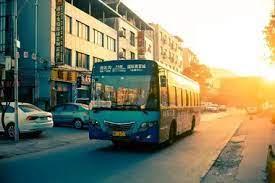Navigating Safely: Essential Transportation and Commuting Tips
Stanley Bangani![]() Invalid date
4 minutes, 10 seconds
Invalid date
4 minutes, 10 seconds
1.1K views 3 Likes
Introduction:
Transportation has become an essential component of our everyday routine in todays fast-paced society.. Whether we're commuting to work, school, or simply exploring the city, safety should always be a top priority. In this blog, we'll delve into essential tips for safe transportation and commuting to ensure that every journey is a secure and enjoyable experience.
Plan Ahead:
One of the keys to safe commuting is proper planning. Before heading out, check the weather forecast, traffic conditions, and any potential road closures. Plan alternative routes and give yourself extra time to reach your destination. This not only reduces stress but also minimizes the risk of rushing and making unsafe decisions on the road.
Regular Vehicle Maintenance:
Whether you're driving your own car or using public transportation, ensuring that vehicles are well-maintained is crucial for safety. Regularly check brakes, tires, lights, and fluid levels. For public transportation users, choose reputable services that prioritize maintenance and adhere to safety regulations.
Buckle Up and Secure Belongings:
For those who commute by car, wearing a seatbelt is a fundamental safety measure. It significantly reduces the risk of injury in the event of an accident. Additionally, secure loose items in your vehicle to prevent them from becoming projectiles during sudden stops or collisions.
Stay Informed:
Being aware of your surroundings and staying informed about current events can contribute to safer commuting. Stay updated on traffic reports, construction zones, and any potential hazards along your route. Apps and websites that provide real-time updates can be valuable tools for staying informed.
Public Transportation Safety:
For those who rely on buses, trains, or subways, be aware of the safety guidelines and emergency procedures. Stand behind designated lines, use handrails, and be cautious when boarding or disembarking. If you're unfamiliar with a transit system, ask for assistance or refer to maps and signage.
Pedestrian and Cyclist Safety:
If your commute involves walking or cycling, follow pedestrian and cyclist safety rules. Use designated crosswalks, obey traffic signals, and wear reflective clothing, especially in low-light conditions. Always be vigilant and avoid distractions like texting while crossing roads.
Limit Distractions:
Whether you're driving or using public transportation, minimizing distractions is crucial for safe commuting. Avoid using your phone, eating, or engaging in activities that divert your attention from the road or your surroundings.
Emergency Preparedness:
Equip yourself with basic emergency items, such as a first aid kit, flashlight, and a phone charger. Knowing the location of emergency exits on public transportation or having a plan in case of a breakdown can make a significant difference in unexpected situations.
Conclusion:
Safe transportation and commuting are collective responsibilities that require vigilance and adherence to guidelines. By incorporating these essential tips into our daily routines, we contribute to a safer and more secure transportation environment for ourselves and those around us. Remember, each journey, no matter how short or long, should prioritize safety above all else. Safe travels!
image source:https://thefairytaletraveler.com/navigating-public-transportation-while-traveling/

